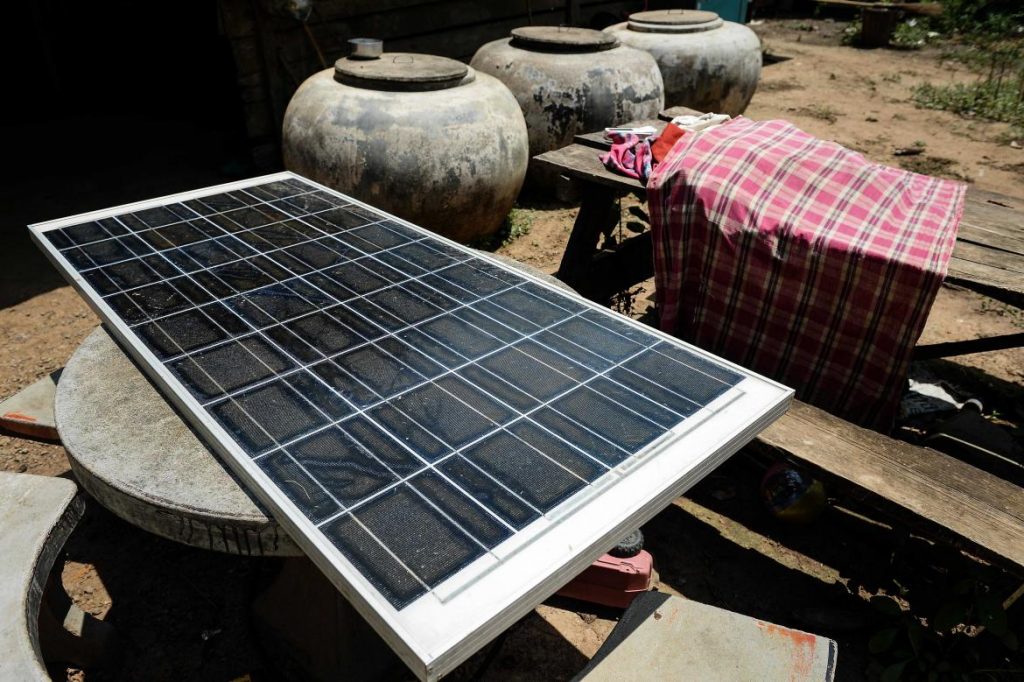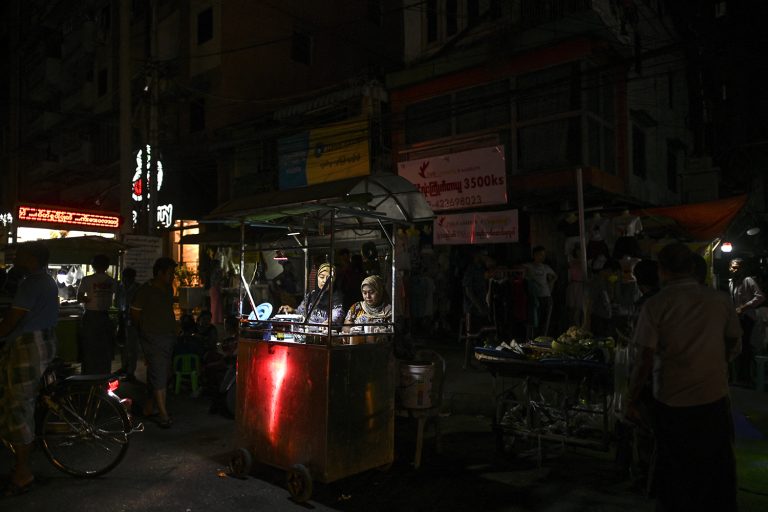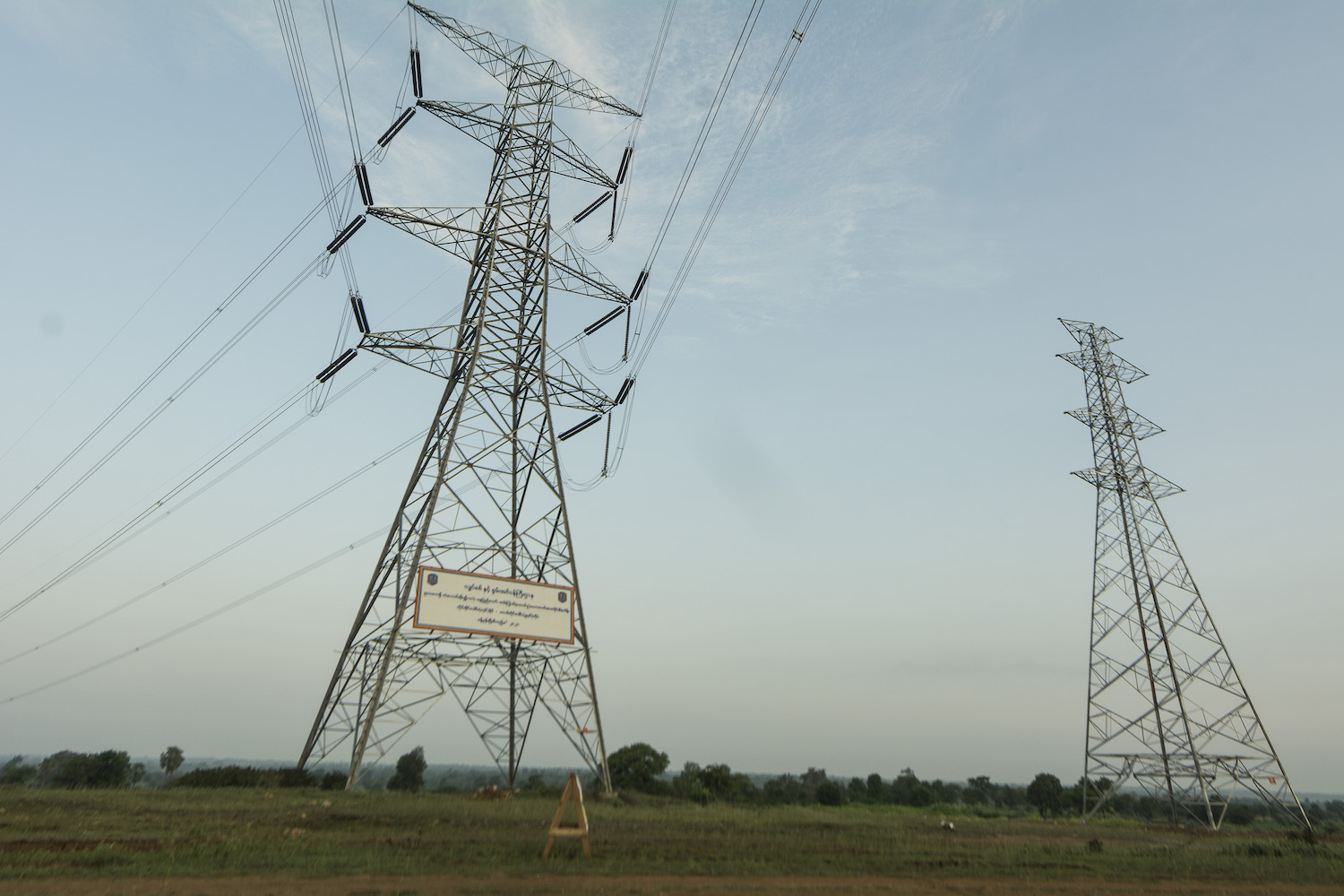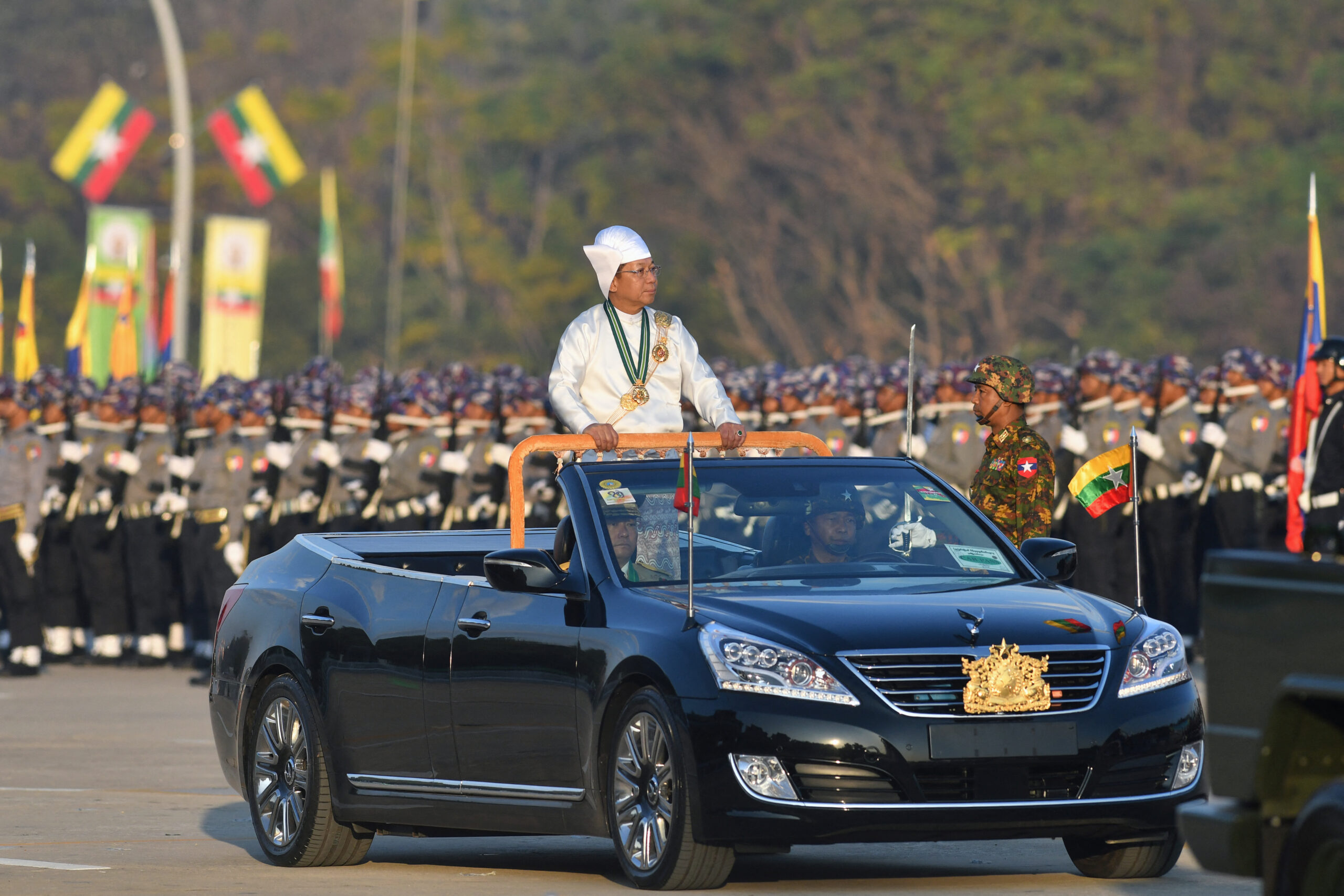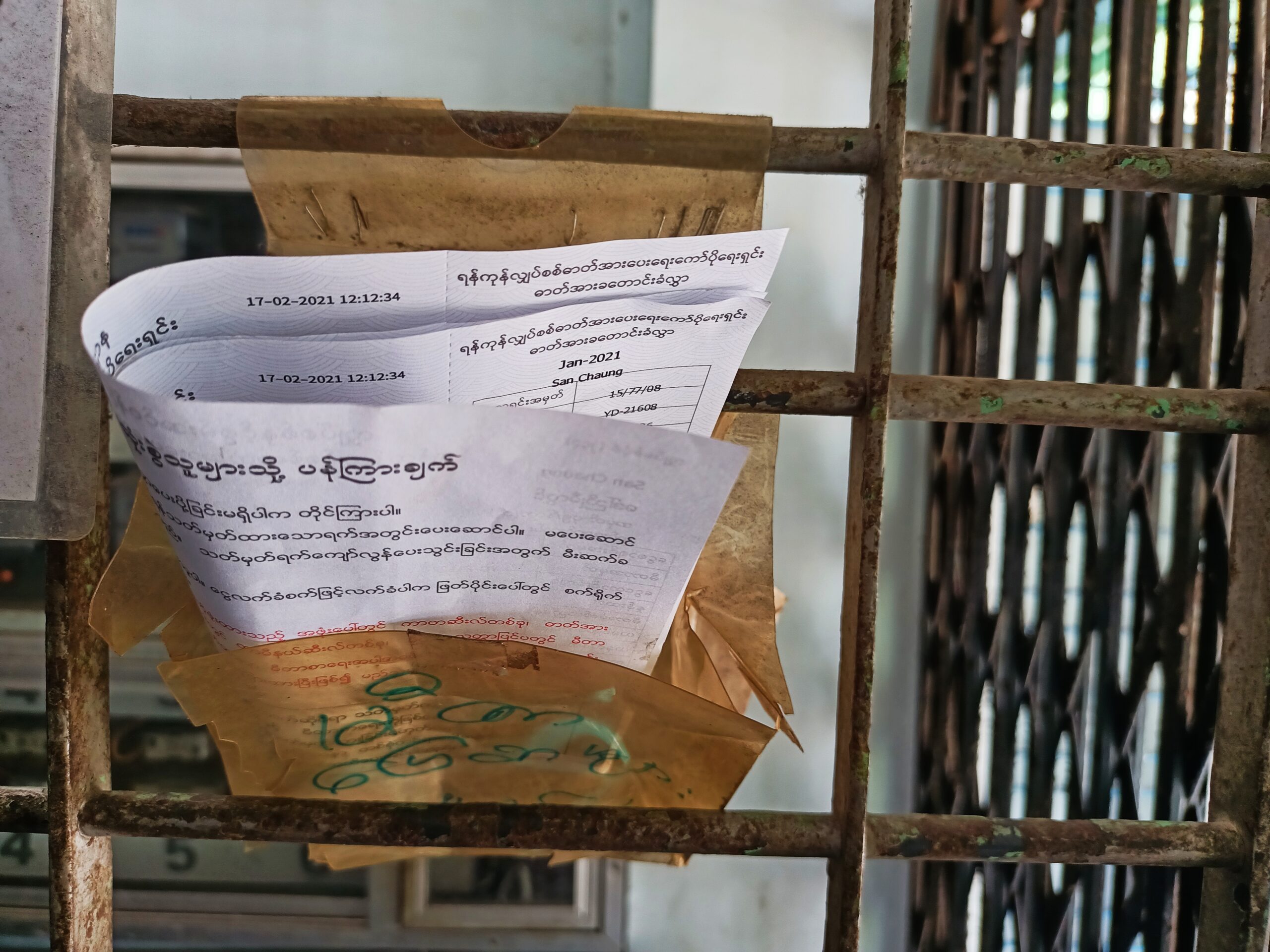Strong demand is driving a rapid expansion of household solar panel rigs across Myanmar.
By THOMAS KEAN | FRONTIER
Mr Bill Gallery describes it as the “golden goose”: a rice cooker that can be run on a small home solar system.
For now, it remains just a dream: Rice cookers simply use too much power. But Gallery, who heads the International Finance Corporation’s Lighting Myanmar project, says he is confident that the challenge will be met in the years to come. There’s simply too much demand, too big a market, too many incentives for manufacturers to come up with a solution.
That a solar-powered rice cooker is being contemplated at all though is indicative of how far the off-grid home solar market has come, both in Myanmar and globally.
Support more independent journalism like this. Sign up to be a Frontier member.
Not too long ago these systems tended to put out very small amounts of power: 45, 20, even 10 watts – just enough to power a few efficient light bulbs.
Improvements in technology and affordability mean that home setups of 200 to 300W are now common. But, just as significantly, change has come on the demand side.
“Panels are cheaper, batteries are cheaper, but one of the biggest changes driving the move to bigger systems is more efficient appliances,” Gallery told Frontier. “Old [cathode ray tube] TVs are difficult to run off a solar system for more than an hour or two. Now they are making TVs that are running off just 5W or 10W – they can run for hours and hours.”
It’s difficult to say exactly how big the market in Myanmar is, or how fast it’s growing. That it’s now common to see solar panels being sold widely in most Myanmar towns suggests that demand is strong.
The March 2014 census found that almost 950,000 households, or around 9 percent, were relying on solar power. However, the census only allowed respondents to choose one power source, even though it is common for those off the grid – and even sometimes those receiving state-subsidised power – to rely on multiple sources, such as solar, private generator, battery and small-scale hydro.
There’s little doubt that both the number and percentage of households using solar has risen significantly since the census. The government alone has distributed several hundred thousand solar home systems – typically ranging from 30 to 60 watts – over the past three years, mostly through the Department of Rural Development.
Gallery says that more recent data suggests penetration of 15 percent or more, which was consistent with anecdotal reports and observations on the “thriving” retail market.
“We’re seeing bigger and bigger solar systems as the market develops. It started with small lamps but it’s moving towards the larger end of the scale. More people in off-grid areas are demanding that level of power,” Gallery said.
Lighting Myanmar’s aim is to support the sale of 800,000 high-quality solar products by 2022 and one of its focuses is addressing issues around affordability. As solar systems get bigger, they naturally get more expensive, so the IFC – which is part of the World Bank Group – works with microfinance institutions to enable people to buy them on credit.
A newer model, which has proved popular in parts of Africa and elsewhere, is known as pay as you go. The solar system is paid off over time, in scheduled repayments. Miss a repayment, though, and it will shut down completely. Once the repayments are complete, typically after one or two years, it unlocks permanently.
Gallery says at least two companies are already offering this in Myanmar on a pilot basis. Cash payments are a hindrance to growth though, so growth potential is intertwined with that of mobile money technologies.
“It’s definitely an option for people to take their destiny into their own hands and get electricity for themselves,” he said. “Because these products are out there and they’re getting more affordable.”
This article originally appeared in Frontier’s special report on Myanmar’s energy sector. TOP PHOTO: A solar panel in front of a house in a village near the Thai-Myanmar border. (AFP)


